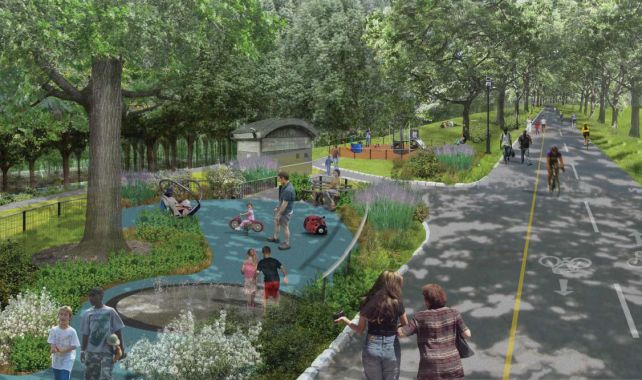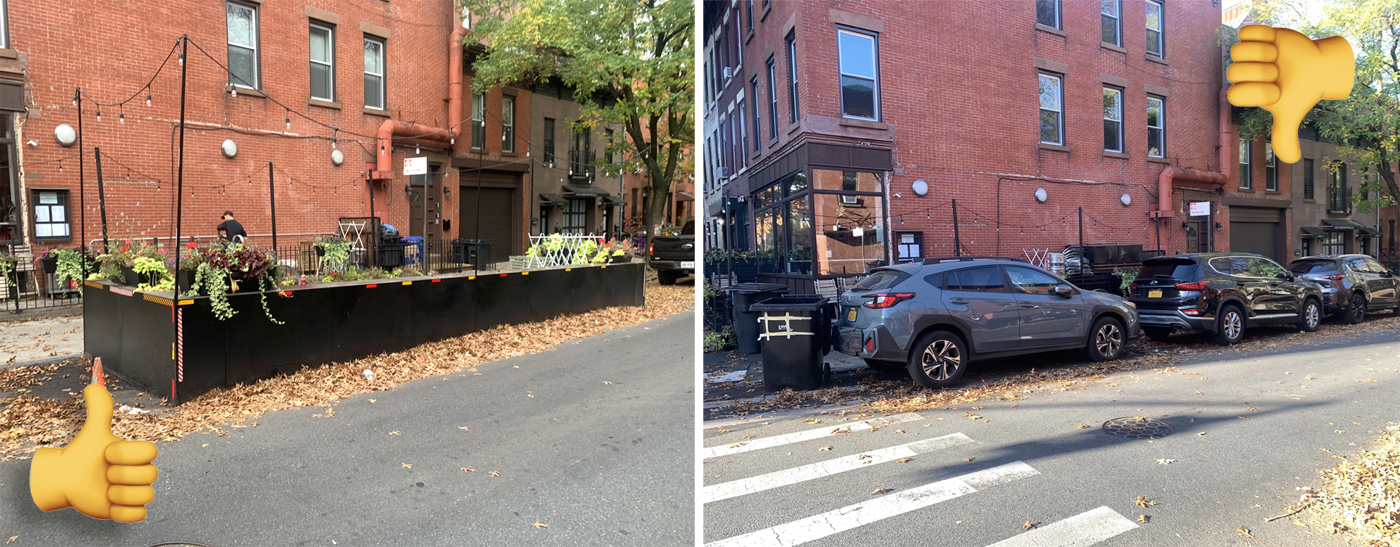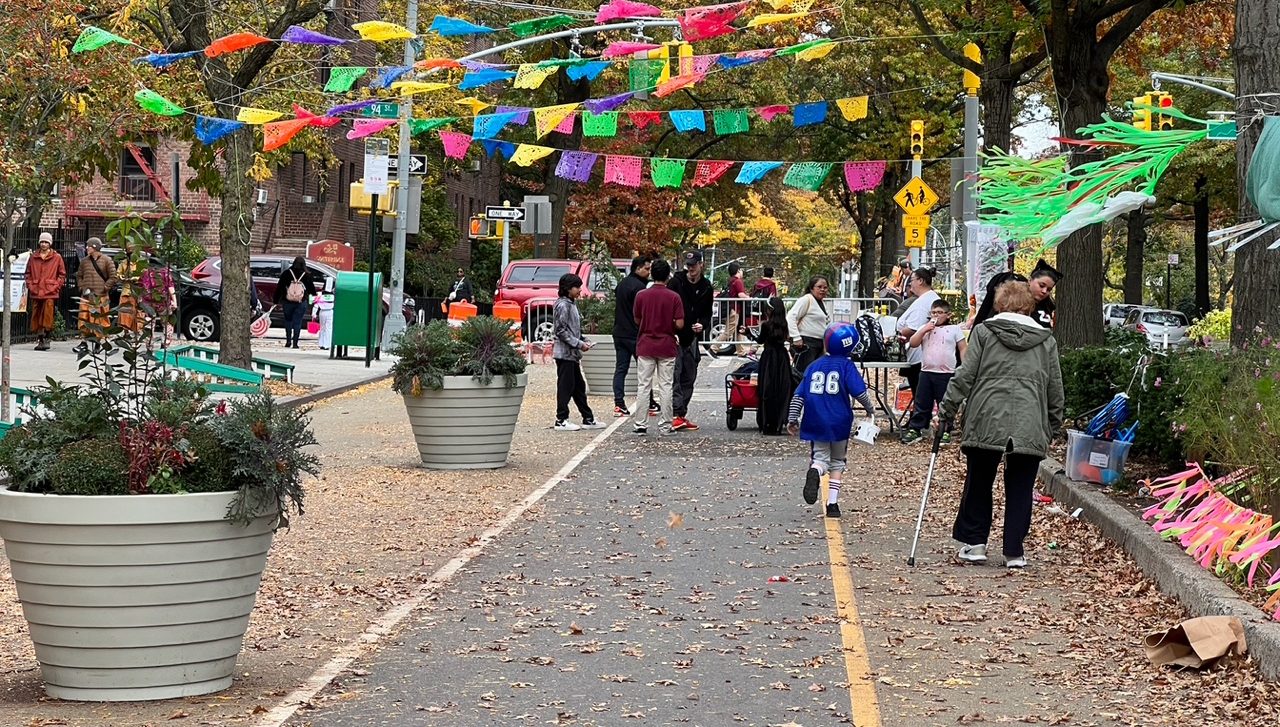Nine bicycle and pedestrian projects in New York City are receiving federal funds distributed through New York State DOT, according to an announcement late last month by Governor Andrew Cuomo. The projects range from pedestrian safety fixes on streets near busy expressways to upgraded plazas and greenways.

The New York City awards are:
- South Bronx Greenway: This project is focused on bicycle and pedestrian safety improvements along Bruckner Boulevard south of Hunts Point Avenue, linking to a greenway to Randall's Island. The grant covers $2.5 million of the project's $3.15 million total cost.
- Kent Avenue South: Earlier this year, a separated bike path was installed on Kent Avenue from Clymer Street to Williamsburg Street West. The project would upgrade the path, which is part of the Brooklyn Waterfront Greenway, with permanent materials. The grant covers $2.5 million of the project's $4.3 million total cost.
- Atlantic Avenue: This project, covering 22 blocks in East New York, includes expanded medians, new street trees, wayfinding signage, and possibly street seating. The grant covers $2.5 million of the project's $8.5 million total cost.
- Fourth Avenue: An existing road diet in Park Slope and Sunset Park is being upgraded with permanent materials. This round of funding will build two phases of the project, first from 33rd to 47th Streets and then from 8th to 18th Streets. Widened medians will include trees, shrubs, benches, and pedestrian wayfinding. The grant covers $2.5 million of the project's $10 million total cost.
- Safe Routes to School projects: Areas near seven schools will receive pedestrian refuge islands, sidewalk extensions, curb extensions, and intersection realigments. The schools are PS 135, David Grayson Christian Academy/PS 191, and PS 361 in Brooklyn; PS 95 and PS 35 in Queens, PS 170 in the Bronx; and PS 20 in Staten Island. The grant covers $2.4 million of the projects' $3 million total cost.
- Morrison Avenue plaza: The plaza will span 9,000 square feet of sidewalk and street space at the intersection of Westchester Avenue, Morrison Avenue, and Harrod Place in Soundview. The project includes bike parking, wayfinding, landscaping, and street lighting. The grant covers $2.5 million of the project's $3.1 million total cost.
- Industry City pedestrian improvements: Spurred by a request from the owners of Industry City, Third Avenue beneath the Gowanus Expressway is set to receive street lights, pedestrian signage, and crosswalks. The upgrades will be at the intersections with 29th to 39th Streets. The grant covers $956,000 of the project's $1.6 million total cost.
- Bronx River Greenway Shoelace Link: A 1.2-mile link in the Bronx River Greenway will be completed through Shoelace Park, stretching from East Gun Hill Road to 233rd Street in Woodlawn. Unlike other projects, which are administered by DOT, the greenway link is a project of the Parks Department. In addition to the greenway, it will feature stormwater runoff bioswales, bike racks, benches, and signage. The grant covers $2.5 million of the project's $3.25 million total cost.
This announcement is the latest in a line of bike-ped funding announcements from the Cuomo administration. Before this year, the state had been sluggish in getting bike-ped grants out the door to local communities.
In January, the state announced $67 million in federal bike-ped funds, including money for the Pulaski Bridge bike path, from the Transportation Enhancements Program. In June, the state announced $76 million in federal highway safety funds, with about 60 percent dedicated to bike-pedestrian projects. The latest round comes from the Transportation Alternatives Program, which replaced Transportation Enhancements as the primary source of federal funding for bicycle and pedestrian projects nationwide.
In February, the state solicited applications for $50 million from this pot of money, covering two years of funding. Since then, Congress passed an extension of the federal transportation law, meaning the state could hand out a little more cash. Over the spring and summer, the state DOT received applications from 135 projects, asking for a combined $126.8 million. In the end, the state distributed approximately $70 million to 68 bicycle and pedestrian projects, with about $18.3 million going to nine projects in New York City.
Transportation advocates welcomed the news. "It's very encouraging," said Nadine Lemmon of Tri-State Transportation Campaign. "[It's] a great sign that the governor's office has recognized the value, and demand, for more livable communities."
Lemmon urged Cuomo to keep the momentum going by dedicating state funds to bicycle and pedestrian projects, instead of just handing out federal dollars. This move is important because federal support has dropped in recent years and the state could make up the shortfall. "The governor's next budget is a great opportunity to transform these solid first steps into a sustainable policy and practice," Lemmon said.
This post has been updated with additional information from the Parks Department.





